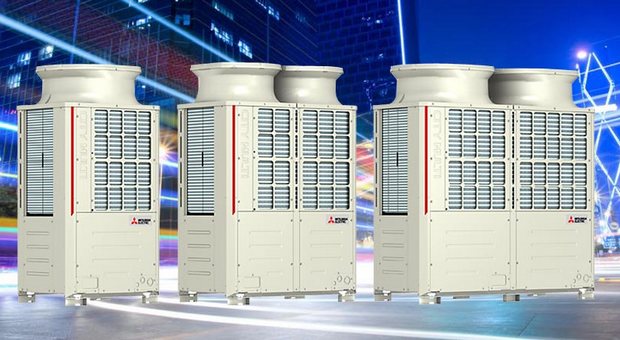Mitsubishi adds R32 Hybrid VRF

With the pressure on R410A increasing, Mitsubishi Electric has introduced an R32 version of its City Multi Hybrid VRF.
First introduced in 2013, the Hybrid VRF combines VRF and chiller technologies. It uses water throughout the majority of the pipework to transfer simultaneous heating and cooling to different rooms yet still offers two-pipe heat recovery.
Mitsubishi Electric says that the R32 Hybrid is designed to meet the demand for air conditioning systems that deliver high operational efficiency whilst minimising the global warming potential of the refrigerants used within these systems.
“There have already been over 500 Hybrid VRF systems installed across Europe since we launched five years ago and we believe this R32 version will increase the market share for this unique VRF solution,” said air conditioning product marketing manager Mark Grayston.
“Not only can Hybrid VRF help remove the need for leak detection, this R32 version delivers the low GWP benefits that customers are now searching for.
“We already have split air conditioning models on R32 and have introduced Hybrid VRF so that customers have a complete range of R32 solutions regardless of the building or situation,” Grayston added.
“Coupled with this is the rapid price rises of R410A month by month which places a strain on traditional VRF systems so we want to ensure that both customers and installers not only have an alternative, but also get the added benefit of increased performance and advanced controls.”
The new units will be introduced in stages, beginning in September with 20-30kW units, followed by units to 50kW in spring 2019.
“We’ve seen particular growth in Hybrid VRF sales in both the office and hotel sectors and with this R32 version we have sought to answer one of the hottest topics in the UK air conditioning industry on how to tackle low GWP in larger systems,” said Grayston. “Hybrid VRF is also designed to offer customers a future-proof solution that delivers advanced efficiency with improved corporate social responsibility.”
At the heart of the new system is an HBC (Hybrid Branch Controller) box, which is connected to the outdoor unit via traditional refrigerant piping. Between the HBC box and the indoor fan coils, the system uses water piping but still offers high sensible cooling and stable room temperatures for maximum comfort.
“Legislation is also now demanding that leak detection equipment is installed alongside VRF air conditioning when it is used in occupied spaces and this calls for additional equipment costs and added risk, as well higher maintenance bills,” said Grayston. “This new system does away with the need for leak detection whilst also delivering higher sensible cooling throughout the building.”
